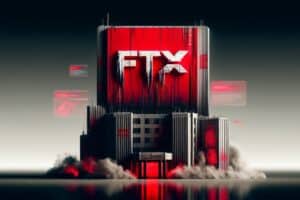The saga of the bankruptcy of FTX, one of the largest cryptocurrency exchanges in the world, continues to evolve, and this time it is the United States Securities and Exchange Commission (SEC) stepping in.
The SEC has recently expressed concerns regarding the bankruptcy plan of FTX, particularly concerning the use of stablecoin in the customer reimbursement process. The commission has raised the doubt that distribution transactions involving crypto assets may violate existing laws and has requested modifications to the proposed plan by the bankruptcy trustees of FTX.
The position of the SEC on the bankruptcy plan of FTX
The bankruptcy plan of FTX includes the distribution of the remaining assets to creditors, including customers who lost funds following the collapse of the exchange. However, the SEC has expressed concern regarding the proposal to use stablecoin, a form of cryptocurrency pegged to the value of more stable assets, such as the US dollar, to make these repayments.
The commission fears that the use of stablecoin could further complicate the legal situation. The SEC has also emphasized that it could challenge any distribution transaction involving crypto assets, which could complicate the reimbursement process and further extend the time for creditors.
In addition to raising concerns about the use of stablecoin, the SEC has requested to modify the bankruptcy plan of FTX. In particular, the commission has asked for the removal of a discharge provision.
The arrangement of esdebitazione is a common clause in bankruptcy plans, designed to provide legal “closure” and protect debtors from further claims. However, the SEC argues that in this specific case, such a clause could prevent creditors from obtaining complete justice, especially if new evidence of misconduct or embezzlement related to the bankruptcy of FTX were to emerge.
The impact of stablecoin in the context of the collapse of FTX
Stablecoins have become a crucial element in the cryptocurrency ecosystem, offering a relatively stable way to store and transfer value within a highly volatile market.
The main concern of the SEC is the very nature of stablecoin and their uncertain legal status. Although they are designed to maintain a stable value, stablecoin are not always backed by adequate reserves, and in some cases, their issuances could be considered a form of security subject to SEC regulation.
In the case of FTX, the use of stablecoin for refunds could be seen as a distribution of cryptographic assets that might violate existing laws regarding securities and investor protection. This poses an additional obstacle for the bankruptcy trustees of the exchange, who must find a way to distribute the remaining assets to creditors in a manner compliant with regulations.
The involvement of the financial authority in the FTX case is just the latest example of how regulatory authorities are intensifying their controls on the cryptocurrency industry. With the growing interest in stablecoins and other cryptographic assets, authorities are seeking to establish a clear regulatory framework to ensure that these technologies are used in a safe and legal manner.
Conclusion
The challenge of the SEC to the bankruptcy plan of FTX marks an important development in the ongoing debate on cryptocurrency regulation. The commission’s concerns regarding the use of stablecoins for customer reimbursement and the request to modify the bankruptcy plan reflect the growing attention that regulatory authorities are placing on this sector.
For the creditors of FTX, the issue remains complex and uncertain, with the potential for further delays and complications in the process of recovering their funds.


